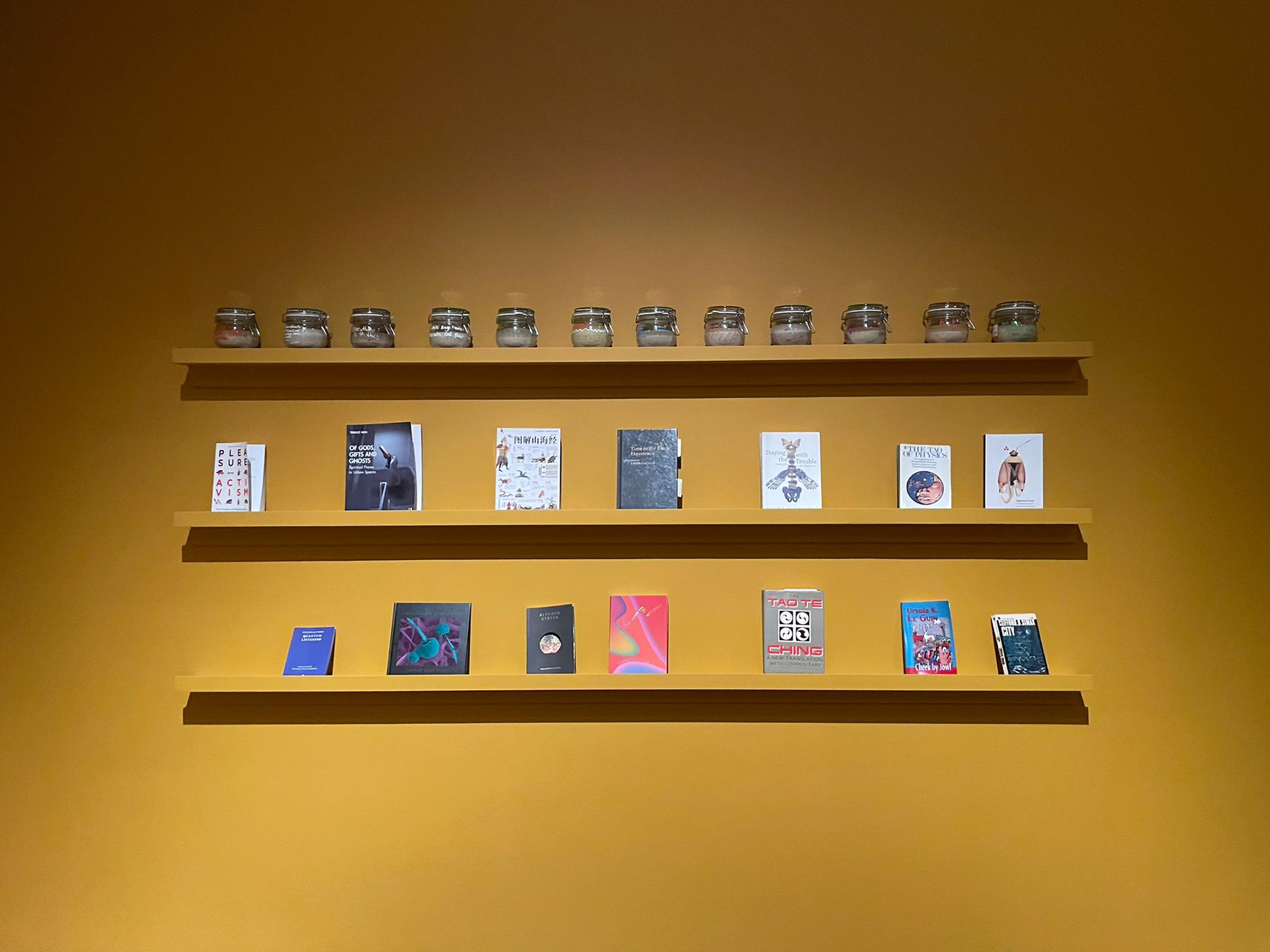Two workshops and a residency with the Centre for Contemporary Arts in Glasgow, Scotland (March 2024)
Part of the programming for artist Rae-Yen Song’s research exhibition ‘life-bestowing cadaverous sooooooooooooooot’, consisting of an initial workshop where participants were led in an experiment attempting to revive a ‘heritage’ ferment called sowans, documented by the folklorist F. Marian McNeal in The Scots Kitchen (McNeill, 1929) and in Rabbie Burns’ poem Hallowe’en (Burns, 1786). The jars of fermented sowans were kept in the gallery and cared for by me in the gallery over the course of the week they were fermenting. Visitors were then invited to a tasting evening at the end of this week, and to reflect on the process and its outcomes.










Exploring microbial inheritance through the senses
In this event we considered microbes as heirlooms that are passed down intergenerationally from our ancestors. This can take the form of both vertical genetic inheritance, and the stories, foods and cultural practices that we inherit through which we can trace the ways humans have been entangled with microorganisms. Human bodies are holobionts composed of a host and trillions of microorganisms whose collective functioning keeps the whole alive. As ancestors, allies, and symbiotes, microbes have lived alongside us as long as we have lived. Human symbioses with microorganisms are an important adaptation and survival strategy that have shaped us and the world around us in important and meaningful ways. Yet, like many forms of biodiversity, global microbial biodiversity is under threat from climate change and an increasingly industrialised food system and a loss of land-based knowledge about heritage food practices.
Workshop 1: Fermenting
In the first workshop, participants learned how to make sowans, a traditional Scottish probiotic porridge and oat drink that is made through a process of wild lactic fermentation. Lactic fermentation is a process used in cuisines around the world, that works by creating an environment in which lactic bacteria, necessary for human health and digestion, to thrive. We created an acidic mixture and then add some spices and seasonings from other parts of the world to see how this affected the fermentation process.
Workshop 2: Tasting
In the second event, participants tasted the fermented drink and porridge, and were led in a discussion about what fermentation means to them, and how they understand microbes in their daily encounters. We also discussed other similar lactic (or 'wild') ferments, and how they differ from other types of fermentation.